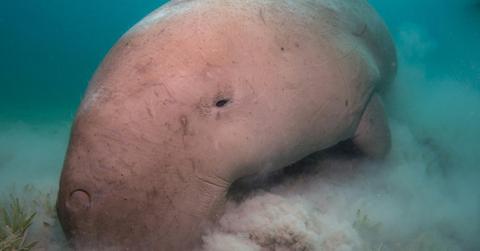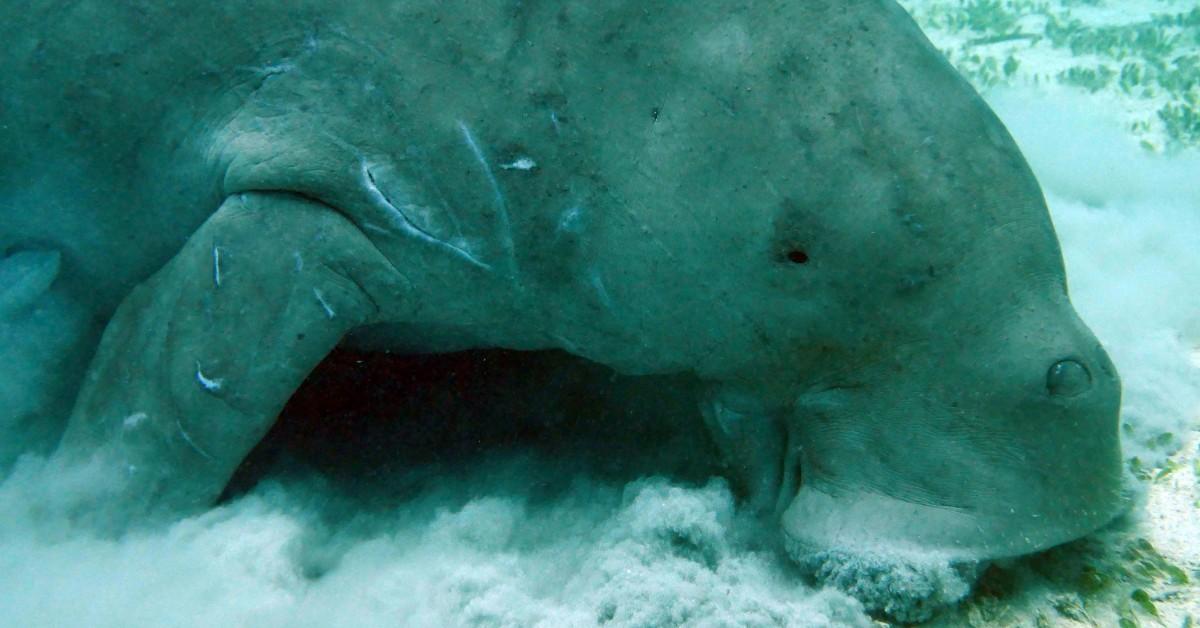Dugongs, the Cousins of the Manatee, Have Been Put on the Vulnerable Species List
These creatures could be facing the same plight as the manatee.
Published June 12 2025, 10:19 a.m. ET

You're missing out if you've never heard of the dugong. These cousins of the manatee closely resemble their Florida family, as they are large and gray herbivores that float peacefully through the waters.
And while their locations differ — dugongs are located in the tropical waters of around Australia, Malaysia, East Africa, and India, while manatees are largely found in the freshwaters of Florida — both animals are facing population shortages.
So, why are dugongs endangered? Climate change and manmade issues are plaguing the creatures and the fragile areas they call home. You can learn more about their plight below, including how to tell the difference between the dugong and manatee in the wild.

Why are dugongs endangered?
It should come as no surprise that the dugong has been added to the vulnerable list by the World Wildlife Fund (WWF) due to habitat loss. These animals rely on the shallow coastal areas where seagrass grows for survival. However, excessive coastal development, combined with pollution, has jeopardized those areas, causing their food sources to disappear.
Without a consistent food source, the dugongs are not only starving, but they also aren't mating.
But those aren't the only issues plaguing the animals that also go by the name "sea cows." They also frequently end up in fishing nets, which can cause them to become entangled and get strangled.
How many dugongs are left in the world?
According to the International Fund for Animal Welfare (IFAW), there are somewhere around 100,000 dugongs left in the world. These marine creatures are spread across about 40 countries, with some areas seeing critically low population numbers.
For example, the IFAW says that the numbers of dugongs are still high in areas of northwestern Australia, where populations flourish. However, they are basically extinct off the coast of China.
In fact, the largest number of dugongs left in the world appears to be in Australia, where they call the warm waters of the Indian Ocean home.
How can you tell the difference between a dugong and a manatee?
If you want to see a dugong in the wild, you'll need to know how to distinguish them from manatees. The good news is that this is very easy, because despite looking similar, there are some key physical and lifestyle differences that make them easy to tell apart.
For starters, dugong tails are distinctly different from their cousins. While manatee tails are paddle-like, dugongs have tails that are more fluted, making them look more like a whale or dolphin.
Then there is their size. While both creatures are on the larger size, manatees are slightly bigger, averaging between eight and 13 feet in length and weighing in at between 440 and 1,300 pounds, according to the Marine Mammal Center.
Meanwhile dugongs are slightly smaller, measuring between eight to 10 feet in length and weighing in at somewhere between 510 and 1,100 pounds.
With all these similarities, it's easy to see how you could confuse the two when seeing them side-by-side. However, since their habitats don't overlap, you'll likely never encounter them together in the wild, making them easier to distinguish.